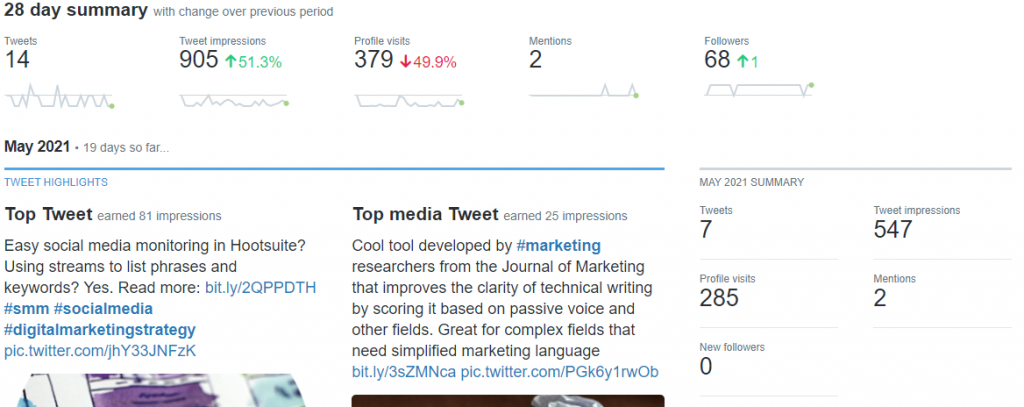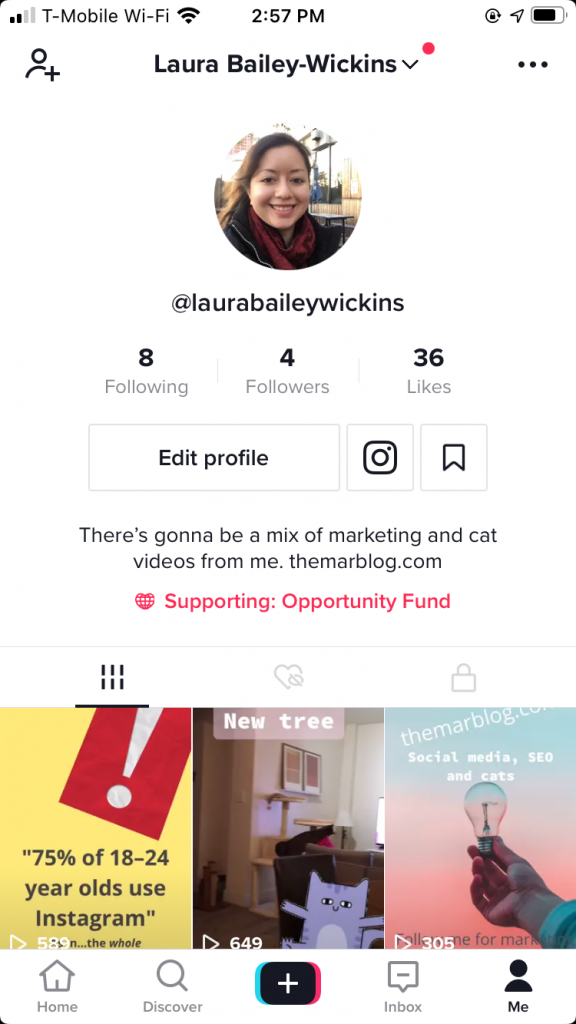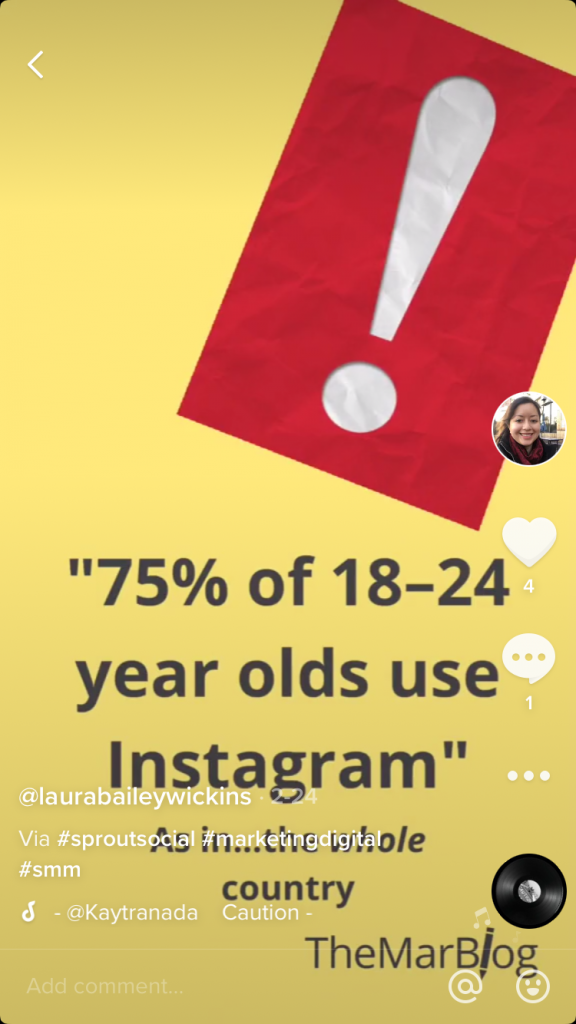With the overwhelming number of robust social media analytics tools on the market catered to small businesses with flashy features and capabilities, it’s become harder to decipher what’s necessary to track vs what’s a ‘nice-to-have.’
We’ll walk you through social media analytics and metrics measurement basics along with free tools available at your disposal that get to the heart of what you want to measure.
What is social media analytics?
Let’s start with a simple definition taken from Hootsuite’s Blog. Hootsuite is a social media analytics and management tool.
“Social media analytics is the process of tracking, collecting, and analyzing data from social networks. It is used by marketers to understand social media performance, keep track of important social media metrics, and create social media reports.”
Source: “What Is Social Media Analytics? (Plus Free and Paid Tools),” Hootsuite, April 21, 2021. | Link
Per the above, social media analytics is an act of collecting important information from the content you publicize on social media. Once you understand what’s working, you can then pause or halt any content publication that isn’t driving the needle on your marketing goals (i.e. lead generation, brand awareness, customer retention, etc).
What are social media marketing metrics?

Social media marketing metrics are the performance indicators you collect as part of your social media analytics review. For example, these metrics are the number of followers, conversion rates, and other variables to track over time. These metrics tell a story of your interactions with people online, including what content resonates, and whether your social media efforts are reaching the right audience.
How do I measure social media insights and engagement?
The easiest way to capture basic social media metrics is to pull them directly from social media platforms themselves. Further down, we’ll walk you through the steps to find basic social media metrics across the most popular platforms.
Below is a list of essential metrics to track, include in a social media marketing dashboard, coupled with their definitions.
Social media metrics to measure social media marketing success
- Followers: the number of people who ‘subscribe’ to your content to see on their social media feeds
- Impressions: the number of times a social media post is viewed
- Engagements: the number of times someone retweets, shares, likes, comments, or reacts to your post
- Engagement Rate: measured as the number of engagements divided by the number of impressions
- Clicks: the number of times someone clicks on your ad that drives to a destination link
- Click-through rate: the number of times someone clicks on a video divided by the number of impressions
- Video Views: the number of times a video was viewed (for example on YouTube or as part of an engagement on other platforms above)
While the above metrics are typically found on social media platforms and offer a light story into how your posts do with followers or a general audience, this data may not capture the deeper insight you need to tie your social media channel to your broader marketing goals.
For deeper insight into how social media plays a role in your marketing efforts, you’ll need to combine some marketing analytics tools in aggregate with social media platforms to determine campaign success. Below are the general marketing metrics to track via social media to tie your content back to your marketing goals.
Social media metrics to measure overall marketing success
- Conversions: the number of people who took an action on your destination link from a social post such as completing a form, subscribing to a newsletter, or calling a business number
- Conversion rate: the number of times someone completed a desired action on the destination link from your social post divided by the number of clicks on your post
- Form-fills: the number of times people filled in their information on a form as part of a lead generation goal on your destination link
- Leads generated: the number of actual leads generated that can be tied back to your social media post including form fills, subscriptions, downloading an asset, email outreach, or other lead qualifiers
What free social media analytics tools can I use to help me track my metrics?
For the essential social media metrics tools above, you can use social media platforms to pull data directly. This option is free and easy to understand. To keep your data in a single place, I recommend setting up a quick Google Sheet or Excel file to capture all information on a regular basis.
The one note to keep in mind is the time constraint and manual effort involved in collecting these metrics across a number of sites. If your business markets across 5+ social media platforms, the data collection process could become cumbersome and you may want to consider paid tools like Hootsuite or SproutSocial that automate this process.
Twitter Metrics
What you can measure: number of followers, impressions, mentions, likes, and comments
Navigate to analytics.twitter.com or click on ‘Analytics‘ under the ‘More‘ options on your Twitter profile.

Once you’re on the Twitter Analytics page, you’ll see an overview with key metrics captured over a 28-day period. You have the option to customize the date range.

Facebook Metrics
What you can measure: number of followers, reactions, and comments
Navigate to any post and you’ll see the number of reactions and comments from your published activity below the visual content and copy.

LinkedIn Metrics
What you can measure: number of connections, views (impressions), shares, likes, and comments
Navigate to your profile picture and click ‘Posts & Activity‘ under the ‘Manage section’ of the dropdown.

Click on any post and beneath the copy or visual, click on the ‘number of views (this is also impressions) to see the number of comments, reactions, or shares.

Instagram Metrics
What you can measure: number of followers, likes, and comments
Under your Instagram profile, you can see the number of followers.

Scroll down and click on any post to see the number of comments or likes it received.

TikTok Metrics
What you can measure: number of followers, comments, and likes
Open your TikTok app and navigate to your profile view to see the number of followers and total likes for all your content.

Click on any video to see the number of comments and likes to your video.

YouTube Metrics
What you can measure: number of subscribers, views, watch time, comments, view duration, impressions, returning viewers, and unique viewers
Navigate to the ‘Customize Channel‘ or ‘Manage Videos‘ views below your hero image to bring up the YouTube channel editor.

Under this view, click on ‘Analytics‘ within the left navigation bar.

Within your analytics view, you’ll see the number of views, followers, and watch-time over a default 28-day period. You can adjust the view to a custom time frame as well.
Under the channel analytics view, you can switch between ‘Overview,’ ‘Reach,’ ‘Engagement,’ and ‘Audience‘ for additional insights into your video content. Each tab showcases various metrics including unique viewers, returning viewers and impressions.

UTM Parameters & Google Analytics
For the more advanced metrics listed above that include marketing insights like conversion rates and form fills, recommend tracking everything in Google Analytics. GA is free to anyone with a Google account (free to set up).
To track specific campaigns in the ‘Campaigns‘ view under the ‘Acquisition‘ reports, you’ll need to tie your destination URLs with UTM parameters.
Rule of thumb: for anything you plan to isolate from your general marketing analytics (i.e. an advertising campaign, direct mail letter, one-off newsletter, or unique social campaign), you’ll want to create unique destination links with UTM parameters tagged at the end. This will allow you to assess the performance of those individual pages, clicks, views, follow-through conversion metrics in isolation.

UTM parameters are easy to set up. Navigate to Google Support’s Campaign URL Builder and enter your own information into the fields provided. This site walks you through required fields and what they denote within Google Analytics.

Bring It All Together

Remember the point of all of this work: to achieve a better online presence.
Continue to utilize relevant hashtags, write compelling copy, and halt the excess work that doesn’t bubble up to your marketing goals.
From social media analytics and metrics measurement, you’ll gain better insight into the type of content that’s relevant to your audience. The fruits of your labor will result in higher quality site traffic, on-page conversions, and word-of-mouth.
Was this article helpful? If you’re interested in learning more, check out Increase Site Traffic Quickly with Better Google Ads and How to Conduct Really Easy #Hashtag Research.
Featured photo by Jon Tyson on Unsplash

